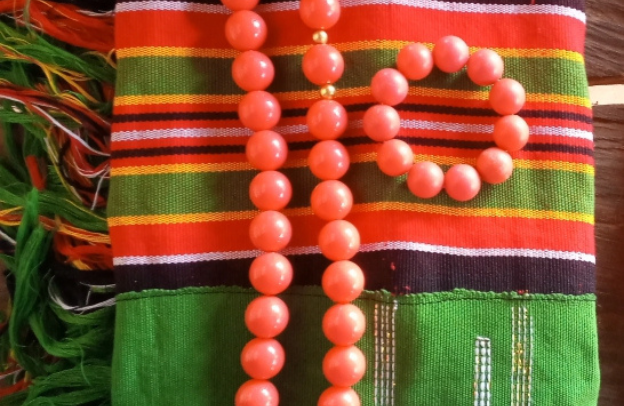Esan Stories, Eternal Lessons: Preserving Identity Through Memory

Memory in Esan, whether passed down through oral traditions, stories, songs, or rituals, serves as the bridge connecting individuals to their heritage, values, and sense of belonging. In many African and diaspora communities, memory is not just a personal recollection but a communal resource that carries the wisdom, struggles, and triumphs of generations.
Learn How to Leverage Your Story through our Story To Asset Framework.
As Esan people, by remembering who we are and where we come from, we preserve the Esan languages, customs, and histories that define us. This preservation is especially vital in the face of displacement, colonization, and globalization, where cultural erasure can threaten identity.
Through intentional acts like storytelling, honoring ancestors, learning traditional practices, and engaging with historical sites, communities reinforce their cultural roots and empower the next generation to walk forward with pride, purpose, and a deep understanding of their lineage.
In Esanland, storytelling is not an event. It is an inheritance.
The Sacred Role of the Storyteller
To be an Esan storyteller is to hold one of the most sacred roles in the community: a custodian of memory, a moral compass, and a guardian of cultural truth. These storytellers, griots, elders, and parents are not mere narrators of tales; they are the historians of the soul.
See also The Color Purple: 6 Lessons For Beginner Storytellers – Learning From The Masters
With each story, they preserve a lineage, encode a worldview, and pass on wisdom that textbooks cannot contain. In the Esan tradition, storytelling is not a pastime under the moonlight in the evenings. It is a sacred ritual where knowledge, ethics, and identity are interwoven through parables, proverbs, and poetic language.
These stories carry more than entertainment; they carry instruction. Each tale is a lesson, each proverb a guidepost. Within them are the deep roots of Esan values: humility, courage, respect for elders, justice, and communal unity.
They are the tools by which generations are shaped not by rote, but through rhythm, emotion, and lived memory. These oral traditions are engineered not just to inform but to transform, instilling virtues that echo through a child’s life long after the fire dies and the storyteller’s voice fades into the night.
In his book Amende the Stream Water, Obehi Ewanfoh opens with a scene that is both poetic and profound: “It is a quiet evening in Okpujie village; the sun has disappeared from the sky, allowing the moon to dominate the village’s blue sky…”
The passage pulses with the tension of drought and communal unease, not simply setting a scene, but invoking a collective memory of struggle, resilience, and reverence for nature’s rhythms.
When Obehi presented this book at the University of Verona in 2017, he spoke of how the narrative flowed naturally from a cultural wellspring. Though he hadn’t yet fully vocalized the principles of storytelling that now define his work, the sacred essence of Esan oral tradition already permeated every line.
See also Memory as Heritage: How to Protect the Esan Identity Through Education
That very essence led to the book being incorporated into academic study at the university, an acknowledgment that ancestral wisdom has scholarly value, too.
Where the Western world often depends on textbooks and facts, the Esan tradition depends on memory, living, breathing, and spoken knowledge.
We trained our minds to listen with intent, to speak with precision, and to remember not only information but spirit. Because in our culture, the story was never just told, it was lived. And in the act of living it, we remember who we are.
Memory As Legacy – The Genius in Oral Tradition
In a world before formal schools or Wi-Fi, our ancestors developed brilliant cognitive tools to ensure that nothing important was ever forgotten. Children grew up memorizing parables and proverbs not just for performance, but because these narratives shaped their worldview.
Memory wasn’t just a function of the brain; it was a responsibility of the spirit. The Esan child learned early that forgetting a story meant losing a lesson. And to lose the lesson was to risk repeating a mistake.
Modern neuroscience now tells us what our elders already knew: that repetition, storytelling, and symbolic language activate deeper memory retention, foster empathy, and encourage critical thinking.
Long before educational theorists coined terms like “experiential learning” or “interdisciplinary pedagogy,” Esan storytellers were already masters of applied education.
We didn’t just tell stories, we built minds.
Identity Grown from Story Roots
What happens when a child knows where they come from? They walk differently. They speak with a rooted tongue. They are less likely to be swept away by the winds of foreign validation. Stories give us that foundation.
For the Esan child, knowing the story of their people, our struggles, our glories, our humor, and our gods is not about nostalgia. It is about becoming.
It is through these narratives that children discover their place in a long continuum of resilience. They learn that their lineage is laced with warriors and wisdom keepers, farmers who sang to the land, women who healed with herbs, and kings who ruled with justice.
These are not just bedtime stories. They are blueprints for becoming.
From Compound to Classroom: Bringing Story into Modern Education
As diasporans, educators, creatives, and parents, how do we carry this sacred storytelling tradition into the modern world?
We don’t need to trade tradition for textbooks. We can braid them together.
Here are a few ways to infuse Esan storytelling into contemporary learning:
- Story Circles: Build a space where students can share folk tales from their culture. Not just to entertain, but to connect. Let them become the griots of their generation.
- Proverb of the Week: Choose an Esan proverb, unpack it in class, and ask students how it relates to their lives today. You’ll be surprised how a centuries-old saying can solve a modern dilemma.
- Role-Playing & Dramatization: Have students act out traditional tales. It cultivates empathy, interpretation, and deeper emotional understanding.
- Creative Writing Prompts: Use characters from folklore (like the cunning tortoise or the wise old woman) to inspire original stories rooted in ancestral themes.
- Audio Archives: Record elders in your community sharing stories. Let children listen as part of their “homework.” Let them hear wisdom in the original tone and rhythm of the storyteller’s voice.
By doing this, we don’t just preserve culture—we empower identity. We make learning personal, relevant, and sacred.
Challenges in a Changing World
And yet, we must be honest: oral tradition is under threat. Globalization, migration, the dominance of English, digital media, and the fading number of elders with time to sit and share, all contribute to the erosion of this precious tradition.
Many young people today can recite a Hollywood script line-for-line but have never heard the folktales of their people.
We must resist the idea that modernity and tradition are enemies. They can coexist. The challenge is not to fight technology but to use it—intentionally and wisely.
- Record the stories.
- Digitize the proverbs.
- Publish children’s books rooted in Esan lore.
- Produce an animation series featuring our folktale heroes.
- Host intergenerational storytelling festivals—online and offline.
The goal is not just preservation, but adaptation. Legacy lives where memory is made active.
Diaspora, You Are the Archive
To those in the diaspora, those of us living far from Esanland, yet with Esan blood running through us, this message is for you:
You are the archive now.
You are the elder-in-the-making. You are the bridge between what was and what can be. Don’t wait for someone else to keep the memory alive. Whether through voice, writing, art, or education, it brings the stories forward.
See also From Memory to Mastery: Helping Children Learn and Retain More
Ask your parents or grandparents about the stories they grew up hearing. Record them. Re-tell them. Share them on social media. Turn them into children’s books. Speak Esan. Teach it to your kids. Learn a new proverb each month. Make it a lifestyle, not just a memory.
This is how we protect our cultural DNA.
Conclusion: A Call to Remember
Esan stories are more than echoes from the past—they are instruments for the future. They remind us who we are, who we come from, and who we are becoming. In a world that often demands we forget ourselves to fit in, our stories bring us home.
So let us gather again—by firelight, by classroom, by phone, by page. Let us repeat the words that call the story forth:
- Let the children listen.
- Let the elders speak.
- Let the stories live.
Because through the story, we don’t just remember—we become.
Learn How to Leverage Your Story through our Story To Asset Framework.






